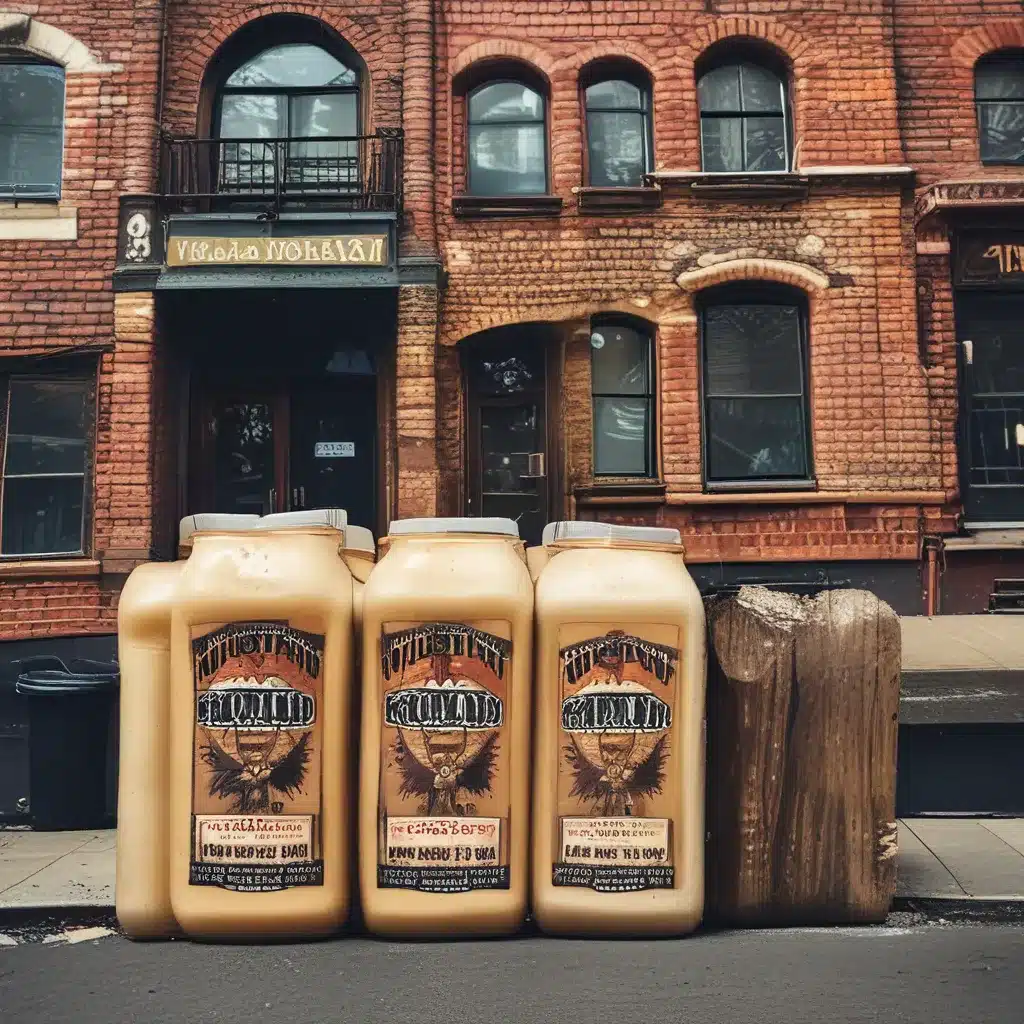
The Mysterious Case of the Rotten Egg Aroma
Ah, the life of a budding urban winemaker – where the only thing more unpredictable than the weather is the whims of the wild yeasts that inhabit our fair borough. As I stood there, nose crinkled in disgust at the unmistakable stench of rotten eggs wafting from my latest batch, I couldn’t help but wonder: how on earth did I end up in this smelly predicament?
It all started innocently enough. I’d been bitten by the DIY fermentation bug, inspired by the vibrant craft beverage scene taking Brooklyn by storm. What better way to dive in than by attempting to harness the power of the invisible microbial forces all around us? Armed with a basic winemaking kit and a healthy dose of exuberance, I set out to capture the essence of my beloved neighborhood in a bottle.
Like so many before me, I soon found myself facing a curious conundrum – the distinct aroma of hydrogen sulfide, that quintessential “rotten egg” scent, had taken over my fermentation vessel. What had I done wrong? Was my dream of crafting a uniquely Brooklynite vintage doomed from the start?
The Sulfur Saga
Determined to get to the bottom of this olfactory enigma, I pored over fermentation troubleshooting guides, reaching out to seasoned homebrewers for advice. As it turns out, the production of that dreaded hydrogen sulfide can be triggered by any number of factors – from yeast stress to improper temperature control and beyond.
“But wait,” I protested, “I followed the instructions to a T! How could this be happening?”
Ah, the humbling reality of working with finicky microorganisms. It seems that even the slightest deviation from optimal conditions can send these tiny alchemists into a tizzy, resulting in off-flavors and aromas that would make even the most seasoned oenophile recoil.
As homebrewing legend Ed Kraus eloquently explained, the sulfur smell is a common issue that can often be resolved through patient racking, sulfite additions, and a bit of good old-fashioned agitation. Determined not to let my batch join the ranks of the fermentation failures, I rolled up my sleeves and got to work.
Battling the Brimstone
First, I carefully racked the wine off the sediment, hoping that a change of scenery would help dissipate the noxious fumes. Then, I cautiously added a dose of potassium metabisulfite, trusting that the sulfur-scavenging properties of this preservative would come to my rescue.
But alas, the stubborn stench persisted. Clearly, I was dealing with a particularly recalcitrant case of hydrogen sulfide. Time to pull out the big guns.
Summoning my inner mad scientist, I rigged up a makeshift copper filtration system, inspired by the tales of winemakers who had conquered this sulfurous scourge. Carefully, I siphoned the wine through a funnel lined with copper Brillo pads, watching in fascination as the metal reacted with the offending compound, liberating the trapped sulfur in a dramatic display.
The results were nothing short of miraculous. With each successive racking, the rotten egg aroma grew fainter, until finally, it was gone – vanquished by the power of good old-fashioned copper. I couldn’t help but chuckle at the alchemical triumph, my once-troubled batch now bubbling merrily, free of its sulfurous shackles.
A Wild Yeast Chase
But the adventure was far from over. As the fermentation wound down and I prepared to rack the wine to its final vessels, I made a startling discovery: the distinctive fruity esters and spicy phenols that I had come to associate with my chosen yeast strain were nowhere to be found. In their place, a mysterious new bouquet had emerged – one that hinted at the presence of an unexpected microbial interloper.
Could it be that the wild yeasts of Brooklyn had crashed my party? I couldn’t help but feel a sense of awe and trepidation at the thought. After all, these invisible denizens of our fair city were an unknown quantity, their unpredictable ways a source of both fascination and frustration for the modern winemaker.
Eager to unravel the mystery, I decided to let the wine age a bit longer, curious to see how this unexpected cast of characters would shape the final product. Would it be a harmonious blend, or a cacophony of clashing flavors? Only time would tell.
Lessons from the Brink
As I reflect on my wild yeast adventure, I can’t help but marvel at the resilience and adaptability of these invisible alchemists. Time and again, they’ve proven their ability to overcome the obstacles we throw their way, whether it’s the rampant sulfur production that nearly derailed my batch or the ever-shifting urban landscape that they call home.
In a way, these tenacious microbes are the perfect embodiment of the Brooklyn spirit – scrappy, unpredictable, and fiercely independent. And as I raise a glass to their triumphs (and my own), I can’t help but wonder what other surprises they have in store, not just for me, but for the entire community of urban fermenters who have fallen under their spell.
So, to all my fellow DIY winemakers out there, take heart! The path to brewing perfection is paved with unexpected challenges, but with a little persistence, a dash of creativity, and a healthy respect for the whims of wild yeast, the rewards can be truly extraordinary. After all, what’s a little sulfur between friends?



















